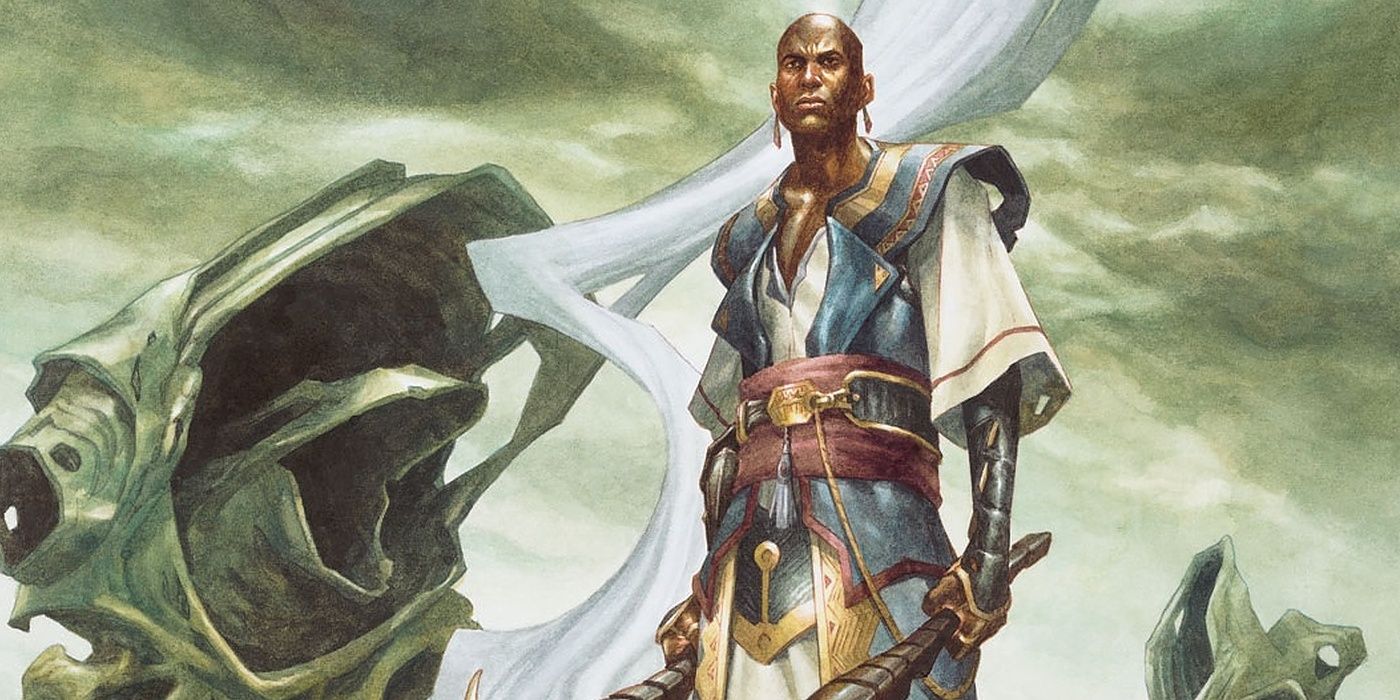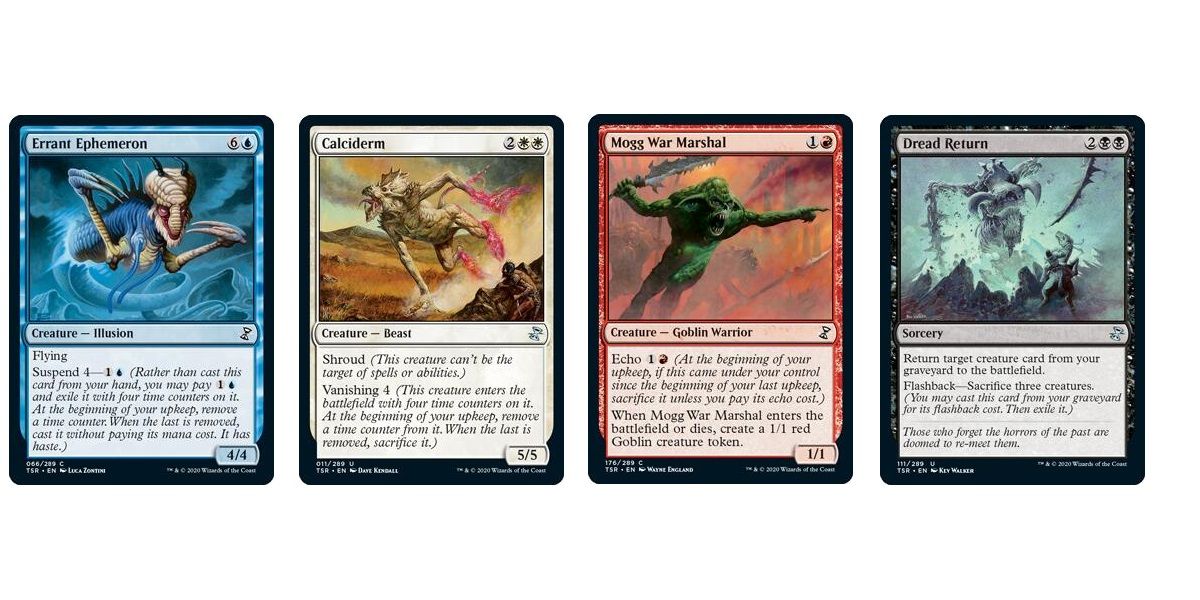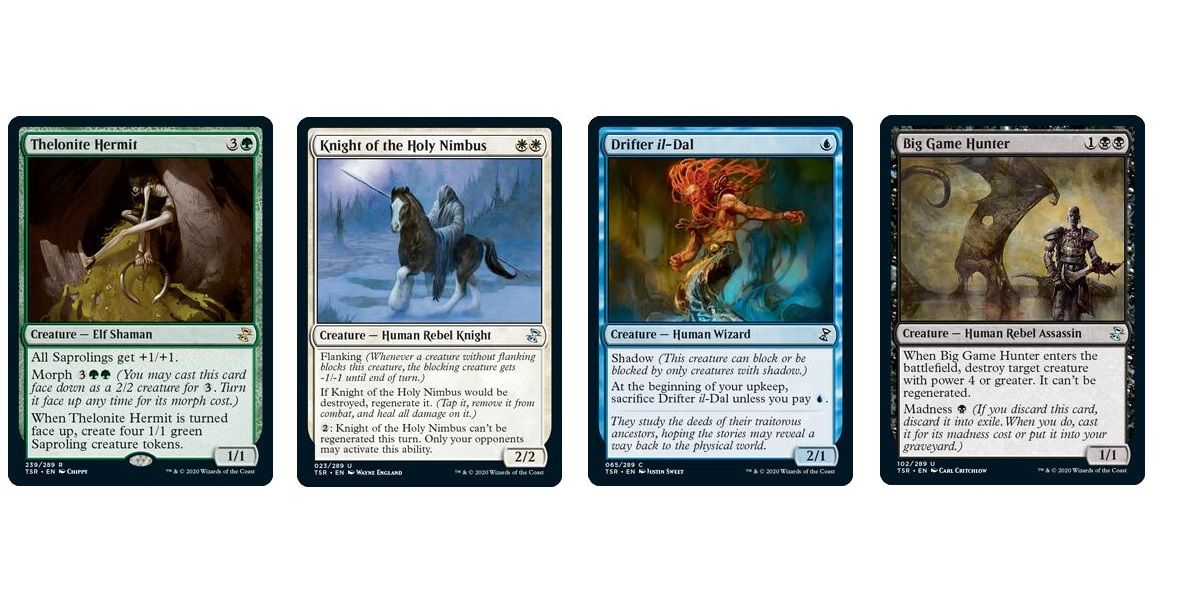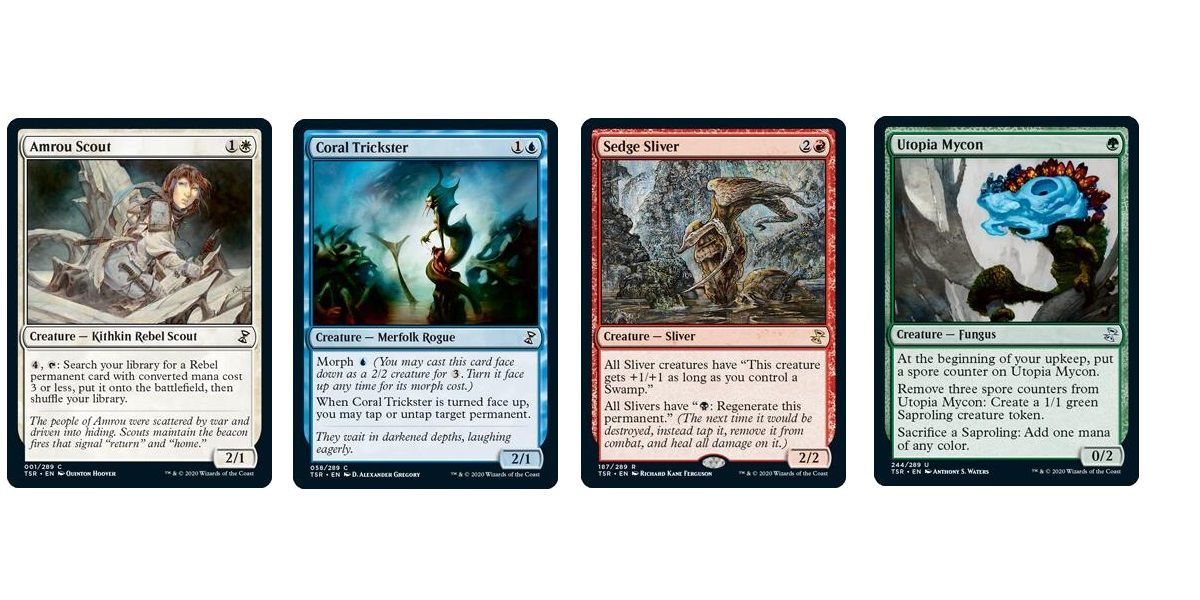Magic: The Gathering's newest product is Time Spiral Remastered, and this is no ordinary set. In fact, it's not even an expansion set at all like Kaldheim. Instead, Time Spiral Remastered is all about booster draft Limited, and drafting the right cards to build a solid deck takes some work.
Overall, this set is geared towards experienced players, and it's not particularly friendly to novices. Since the barrier of entry is rather high, none of these cards will be included in Standard. Experienced, savvy players can study this set's cards to see how they all come together, and some distinct tribes and gameplay mechanical themes stand out. Time Spiral Remastered is indeed all about the flow of time itself.
The Time-Based Mechanics
Time Spiral Remastered features many mechanics and keywords that deal with time itself. Suspend is a major mechanical theme here, appearing in many colors and artifacts, but most often in blue and red. A card can be either cast normally or exiled with its Suspend cost instead at sorcery speed or other timing restrictions. Note that paying the Suspend cost and putting the card into exile with Suspend does not cast the card, meaning this action does not use the stack and cannot be responded to by any player.
The Suspended card will have one or more time counters on it, with the amount being specified on the card itself, and one time counter is removed on each of the card's owner's upkeeps. Once the last time counter is gone, the spell is cast. That's when it uses the stack and may be responded to, such as with counterspells. Some tricky blue cards like Timebender can add or remove time counters, and certain red creatures like Rift Elemental can do the same. Some cards even grant Suspend to cards, such as Jhoira of the Ghitu.
Calciderm has Vanishing, an example of the present. Such cards enter the battlefield with time counters, with one being removed per upkeep. Once the last time counter is gone, the card is sacrificed. However, there can be ways to add more time counters, such as the proliferate ability from the Scars of Mirrodin block (though that won't work for draft).
Echo is another time-based effect, based on the past. Such cards are cast and resolved normally, but on the next upkeep, the player will be prompted to pay a specified Echo cost. Nothing happens if it is paid, but if the player fails to pay that cost, the card is immediately sacrificed. Fortunately, a variety of Echo creatures have triggered abilities when they die, so failing to pay the Echo cost isn't a total loss. The player must decide if the creature is worth paying mana to keep, or if they'd rather free up that mana for another spell. Many red creatures, in particular, have echo.
Flashback also represents the past, and has appeared in various sets and blocks before this one, such as the original Innistrad block, set on a horror world of the same name. Such spells can be cast from the graveyard for their Flashback cost. Once they're either resolved or countered, the spells go into exile.
The Flashback cost can be anything, and may or may not cost mana that matches the card's color identity. Off-color Flashback costs exist, and some are unique. For example, Dread Return demands the sacrifice of three creatures. Flashback can generate some decent card advantage by casting the same effect twice for one physical card, and Flashback can also reward self-mill strategies and discard-based decks, such as Time Spiral Remastered's black-red discard archetype.
Morph, Shadow and Other Odds & Ends
While most sets have between two and four distinct mechanics in them, Time Spiral Remastered has several times that number. Morph, which has appeared many times, is also part of set. This ability allows a creature to be cast face-down for {3} as a colorless, nameless 2/2 creature. After paying the Morph cost, the creature can be flipped face up, and some morph creatures (like Thelonite Hermit) have an effect when this happens. This ability appears here in each color, and the green-blue timeshifted enchantment Secret Plans grants +0/+1 to all friendly face-down Morph creatures. When those creatures are turned face up, the player can draw a card.
Shadow is an insidious effect, appearing on creatures that prefer evasion to brute force. Shadow mostly appears on blue and black creatures, and such creatures can only block or be blocked by other creatures that have Shadow. In a sense, all Shadow creatures exist on their own separate battlefield, only doing combat with each other. For the most part, Shadow serves as evasion, but players must watch out for enemy Shadow creatures and destroy them so they can attack with impunity. Some creatures can gain Shadow temporarily, such as Cutthroat il-Dal, which gains Shadow if its owner has no cards in hand.
Madness is based on discarding cards, fitting right into the black-red archetype. A spell with Madness can be cast for its Madness cost if the card is being discarded for any reason. The Madness cost is often cheaper than the card's normal mana cost, but not always. Such spells can be cast even at times when they normally couldn't, allowing Madness creatures and sorceries to have Flash, in a way. Such cards synergize wonderfully with any Spellshaper, or creatures that discard cards to pay for their powerful abilities. Other spells such as Lightning Axe can discard cards as part of their cost.
Split Second appears on a handful of cards of many colors, and such spells dominate the stack. When a card with Split Second is cast and put onto the stack, no other spells or abilities except for mana abilities may be put onto the stack until the split second card is resolved. Thus, such cards are totally immune to counterspells or other responses. Angel's Grace, Extirpate, Sudden Shock and Wipe Away are examples of cards with Split Second.
Other mechanics appear here and there, such as Flanking, which is primarily a white mana effect. Such creatures can give -1/-1 to another creature in combat when it attacks or blocks, if the other creature doesn't also have Flanking. This often appears on Knights and similar creatures. Delve, Convoke, Storm and Kicker also appear on one or two card each, effectively making cameos in this set.
The Tribes of Time Spiral Remastered
Time Spiral Remastered may not focus as much on tribes as the original Lorwyn block or the Ixalan block, but this set does support some minor tribal themes. The Rebel creature type is strong in white mana, and a few black Rebels are around to help too, such as Big Game Hunter. A few white Rebels in this deck, such as Amrou Scout, can search the library for more Rebels to stock up the battlefield, similar to the Rebels of the pre-Modern era in the Mercadian Masques block. A minor Merfolk tribe is also present, appearing solely in blue mana and featuring cards like True-Name Nemesis, Coral Trickster, Master of the Pearl Trident and Riptide Pilferer.
The next two tribes are more substantial, most notably the Sliver tribe. This tribe mainly appears in Naya colors, especially among its monocolored cards, but multicolored Slivers add blue and black for extra flexibility. All Slivers benefit each other, even the opponent's own Slivers, and a Naya Sliver deck splashing blue and/or black mana can overwhelm the opponent with powerful creatures that are loaded with diverse abilities. Sliver Legion is a 7/7 that can boost all Slivers to new heights of power and toughness, quickly closing out games.
Last up is the black-green Fungus/Saproling tribe, where Fungus creatures can get spore counters to make Saproling tokens. A few other creatures, mainly Elves, can augment this aristocrats deck and add more spore counters to a friendly Fungus. The Saprolings can be sacrificed for various benefits, such as gaining life or giving other creatures -1/-1, and a few white card can be splashed in too, such as Pallid Mycoderm.




